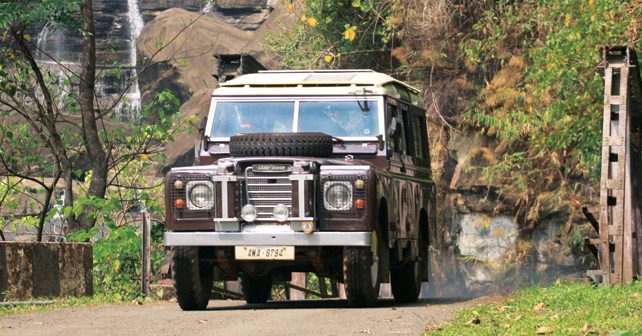
Shahwar extolls the virtues of driving a classic...
For years, I used to buy a magazine called Classic & Sports Car. In addition to all the usual classic and vintage car reviews and restoration stories, the magazine also had a travel section. And those road trips usually took place in classic cars. Needless to say, this was my favourite section. The way these enthusiasts travelled across continents in these restored cars was simply fascinating.
My fascination took on another dimension when, a few years ago, I saw a whole line-up of Jaguar E-Types driving across the border to Bangladesh. They were on an around-the-world trip, and the fact that these old cars can make such a long trip provided some indication of their level of restoration and the dedication of their drivers. I got talking to one of the drivers, who was piloting a 1961 3.8 liter straight-six E-Type in British Racing Green. He had such fascinating tales of driving through Libya, Morocco, Iran, Afghanistan, Pakistan, Nepal, and other countries.
I’ve driven my fair share of old cars, including the likes of a 1947 Jaguar 1.5, a Citroen 11 CV, a 1966 Beetle, Morris 8, and others, but they were for a maximum of about 500 kilometres. Well, last month, I finally fulfilled my dream of completing a proper road trip in a classic car – as I covered 3,000 kilometres in a 1975 Land Rover Series III. And the only thing that I can say about this experience is that it was pure unadulterated fun.
You really have to ‘drive’ these old cars. You can’t take anything for granted. I had restored the Land Rover, but the restoration wasn’t anything to write home about. Let’s just say that I had to make do with a lot of homemade modifications.
When traveling in a classic car, you have to keep your ears open at all times, and, of course, be prepared to blacken your hands at some point or the other. Unlike modern cars, these old cars are a cacophony. There’s simply no sound insulation whatsoever. But the trick is identifying that one sound that may spell trouble amongst the racket made by up all the other parts that are performing seemingly faultlessly – even if they don’t sound like it. Then, of course, is the workout you get thanks to the non-assisted steering wheel.
Although the Landy travelled at a pretty decent clip, it was no match for the other modern cars on the road – and, at times, I felt frustrated. But the thumbs up and smiles from other road users more than made up for the lack of swift progress in some cases. Wherever I stopped, there were a thousand question to be answered and people were always willing to help – often going out of their way. When the diaphragm of the fuel pump stopped working, due to overheating, and I ran out of diesel on an isolated stretch of back road, a gentleman in a Jeep came over to help. He had passed us initially, but came back to ask if we needed help. He then went to the next town, a long way off, to get us some fuel. When the battery went down, because I had accidently left the headlights on overnight, 11 guys came over to push start the big Landy.
There was never a dull moment while driving the Land Rover. Modern cars are comfortable and safe without the shadow of a doubt, but they’re boringly predictable and have no character. At a quick glance, not many can spot the difference between a Renault Duster and Nissan Terrano – or, for that matter, between a new Endeavour and a Prado. Of course there are differences, but to the uninitiated eye (and there are many of them) they look rather similar.
The joy of driving around in a classic car is immense. It just makes the journey much more enjoyable, and certainly far more memorable.























Write your Comment